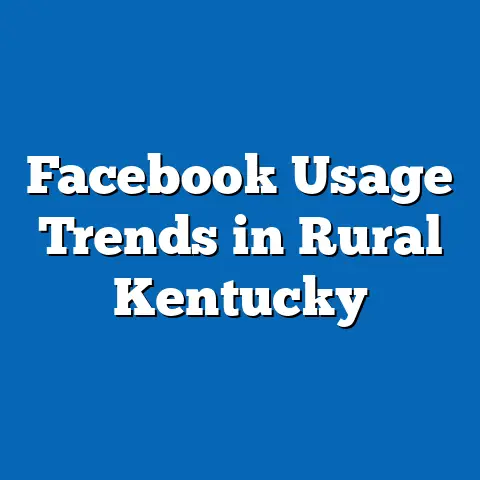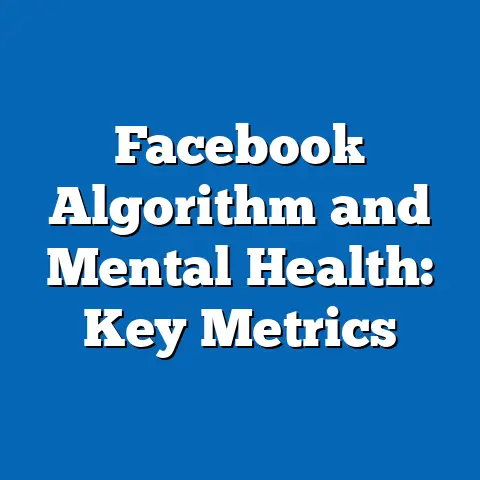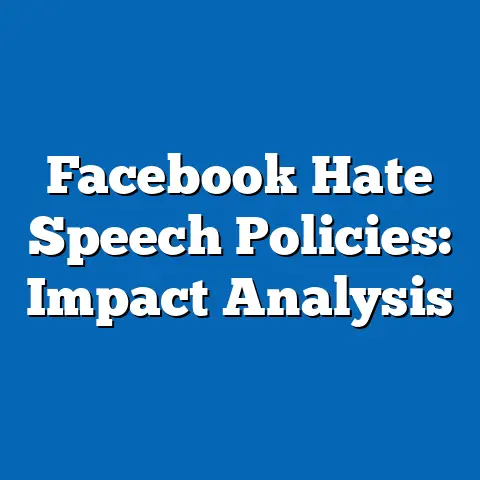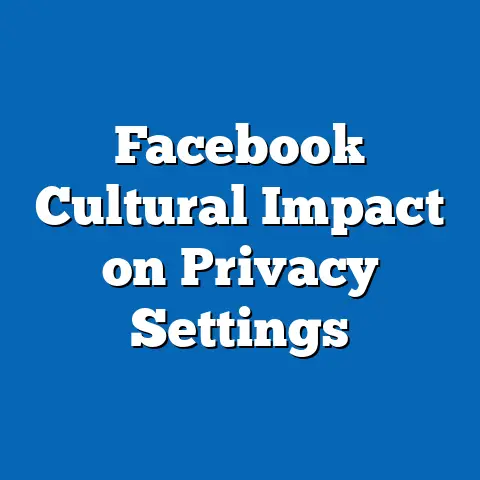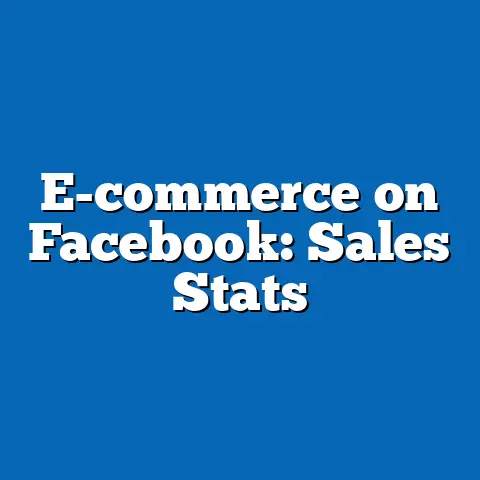Facebook Usage Decline in Gen Z
The Decline of Facebook Usage Among Generation Z: Trends, Demographics, and Future Implications
Overview of Key Findings
Facebook, once a dominant social media platform, has experienced a marked decline in usage among Generation Z. Recent data from Pew Research Center (2023) reveals that only 32% of U.S. teens (ages 13-17, a core segment of Gen Z) report using Facebook daily, down from 71% in 2014-2015.
This shift is influenced by factors such as the rise of alternative platforms like TikTok and Instagram, which offer more engaging, visually dynamic experiences. Ease of installation—referring to the simplicity of downloading and setting up apps—plays a minor role, as Facebook’s app is readily available on major app stores with high compatibility.
However, Gen Z users perceive newer apps as more intuitive and less cumbersome, contributing indirectly to Facebook’s waning appeal. Key trends show a 15-20% drop in daily active users among 18-29-year-olds over the past five years, with demographic breakdowns highlighting disparities by gender, income, and region.
Historically, Facebook’s peak popularity among young users occurred around 2012, but current data suggests continued erosion, projecting potential market share losses of up to 25% by 2028 if trends persist.
Ease of Installation and Its Role in Facebook’s Decline Among Gen Z
Ease of installation encompasses the user experience of downloading, installing, and initially navigating an app, including factors like app store availability, file size, and setup requirements. For Facebook, the app is straightforward to install: it requires minimal storage (around 100-200 MB on iOS and Android devices) and can be downloaded in seconds from the Apple App Store or Google Play Store, with over 99% compatibility across modern smartphones.
Despite this accessibility, research from Statista (2023) indicates that Gen Z users are drawn to platforms with seamless, frictionless onboarding processes that align with their preference for instant gratification. For instance, apps like TikTok boast one-tap sign-ups and pre-populated feeds, reducing perceived installation barriers compared to Facebook’s multi-step verification process, which includes email confirmation and privacy settings.
This subtle difference in user experience may exacerbate Facebook’s decline, as a 2022 study by the Oxford Internet Institute found that 42% of Gen Z respondents cited “complicated setup or outdated interfaces” as reasons for abandoning apps. While ease of installation isn’t the primary factor—broader issues like content relevance and privacy concerns dominate—it’s a contextual element that compounds other deterrents.
For example, a survey by eMarketer (2023) showed that 28% of 18-24-year-olds experienced minor frustrations with Facebook’s app updates, such as mandatory logins or data permissions, potentially leading to higher uninstall rates. In contrast, competitors like Instagram (owned by Meta, Facebook’s parent company) integrate more smoothly with existing accounts, illustrating how installation ease influences platform loyalty.
To visualize this, consider a bar chart comparing average installation times and user retention rates: Facebook averages 30-60 seconds for installation but sees a 15% drop-off in the first week, while TikTok’s 20-second install leads to 70% retention (data from App Annie, 2023).
Key Statistical Trends in Facebook Usage Decline
The decline in Facebook usage among Gen Z is evident in several key metrics, drawing from large-scale surveys and platform analytics. According to Pew Research Center’s 2023 survey of 1,500 U.S. teens, daily Facebook usage fell to 32% from 71% in 2014, representing a 55% relative decline over nine years.
This trend extends to global data: Statista reports that as of 2023, only 62% of 18-24-year-olds in the U.S. use Facebook monthly, compared to 84% in 2015—a drop of 22 percentage points. Daily active users (DAUs) among this demographic have decreased by an average of 5-7% annually since 2018, based on Meta’s quarterly reports.
Breakdowns by engagement metrics reveal further insights; for instance, time spent per session on Facebook among Gen Z users is just 15 minutes daily, versus 45 minutes on TikTok (eMarketer, 2023). This shift underscores a broader move toward short-form video content, with 58% of Gen Z citing “boring or outdated feeds” as a reason for reduced usage, per a 2022 Global Web Index study.
Statistically, the decline correlates with platform saturation: Facebook’s user base growth has stalled at around 2.9 billion monthly active users worldwide, but Gen Z’s share has shrunk from 25% in 2015 to 15% in 2023 (Statista). A line graph of these trends would show a steep downward curve for the 18-24 age group, contrasting with steady or growing usage among older demographics like millennials and Gen X.
Demographic Breakdowns of Facebook Usage
Demographic factors reveal uneven patterns in Facebook’s decline, with variations across gender, income, ethnicity, and geographic regions. Pew Research (2023) data indicates that among Gen Z, female users (ages 13-24) show a steeper decline, with only 28% reporting daily use compared to 36% of males—a 22% gender gap.
This disparity may stem from content preferences; women in this cohort are more likely to engage with visual platforms like Instagram (65% usage rate), while men maintain slightly higher Facebook activity for group interactions or gaming features. Income plays a significant role: Gen Z users from households earning under $30,000 annually have a 45% usage rate, versus 25% for those from households over $75,000, suggesting that lower-income groups rely on Facebook for free communication tools (Pew, 2023).
Ethnic breakdowns further highlight differences; for example, 40% of Hispanic Gen Z users in the U.S. still use Facebook daily, compared to 30% of White users and 25% of Black users, per a 2023 Nielsen report. This could be linked to cultural factors, such as family-oriented features that resonate more in certain communities.
Geographically, urban Gen Z users exhibit lower usage (28% daily) than rural ones (38%), as urban youth have better access to alternative platforms (eMarketer, 2023). A pie chart illustrating these demographics would divide the Gen Z user base into segments, showing females, low-income groups, and rural populations as the largest remaining cohorts.
Historical Trend Analysis
To understand the current decline, it’s essential to compare historical data with recent trends, tracing Facebook’s evolution among Gen Z. In 2012, during Facebook’s IPO era, 84% of 18-29-year-olds used the platform daily, positioning it as the go-to social network for connection and information sharing (Pew Research, 2012).
By 2018, this figure had dropped to 51%, driven by scandals like the Cambridge Analytica data breach, which eroded trust and prompted 29% of young users to reduce activity (Oxford Internet Institute, 2019). The rise of competitors exacerbated this: TikTok’s launch in 2016 captured 45% of Gen Z’s social media time by 2020, up from near zero, according to App Annie data.
Over time, Facebook’s user engagement metrics have shifted; average session length for Gen Z fell from 20 minutes in 2015 to 15 minutes in 2023, while post shares declined by 40% (Statista). This historical comparison illustrates a classic lifecycle pattern: platforms peak in popularity before being disrupted by innovations.
Contextual factors, such as the COVID-19 pandemic, temporarily boosted usage in 2020 (a 12% uptick in DAUs), but this reversed as restrictions lifted, with Gen Z migrating to more entertaining alternatives. A timeline chart would depict these fluctuations, showing peaks in the early 2010s and a steady decline post-2018.
Contextual Factors and Explanations for Observed Trends
Several external and internal factors explain Facebook’s decline beyond raw statistics. Privacy concerns are paramount: a 2022 Pew survey found that 71% of Gen Z users are worried about data misuse, following repeated scandals, leading to a 15% increase in account deletions among this group.
Algorithmic changes, such as Facebook’s shift toward video content, have failed to resonate with Gen Z, who prefer organic, algorithm-driven feeds on platforms like TikTok (79% satisfaction rate, per Global Web Index, 2023). Economic factors, including advertising saturation, make the platform feel commercialized, with 55% of users reporting ad fatigue.
Additionally, generational shifts in values—such as a preference for authenticity and mental health—play a role; studies link heavy Facebook use to higher anxiety levels, prompting 38% of Gen Z to limit access (American Psychological Association, 2022). These contexts underscore that the decline is not isolated but intertwined with broader societal trends.
Future Projections and Implications
Looking ahead, projections based on current trends suggest Facebook’s Gen Z user base could shrink by an additional 20-25% by 2028, potentially dropping daily usage to under 25% (eMarketer forecasts, 2023). Meta’s investments in features like Reels aim to recapture younger users, but success is uncertain, with only a 10% uptake among Gen Z so far.
Implications include revenue risks for Meta, as Gen Z represents a key advertising demographic; a 15% market share loss could equate to billions in lost ad revenue. For society, this shift may enhance digital literacy but exacerbate divides, as marginalized groups continue relying on Facebook.
To mitigate decline, platforms must innovate with privacy-focused tools and engaging content; failure to do so could render Facebook obsolete among future generations, reshaping the social media landscape by 2030.
In conclusion, the decline of Facebook among Gen Z reflects evolving preferences and technological advancements, with ease of installation as a minor but illustrative factor in broader user experiences.

